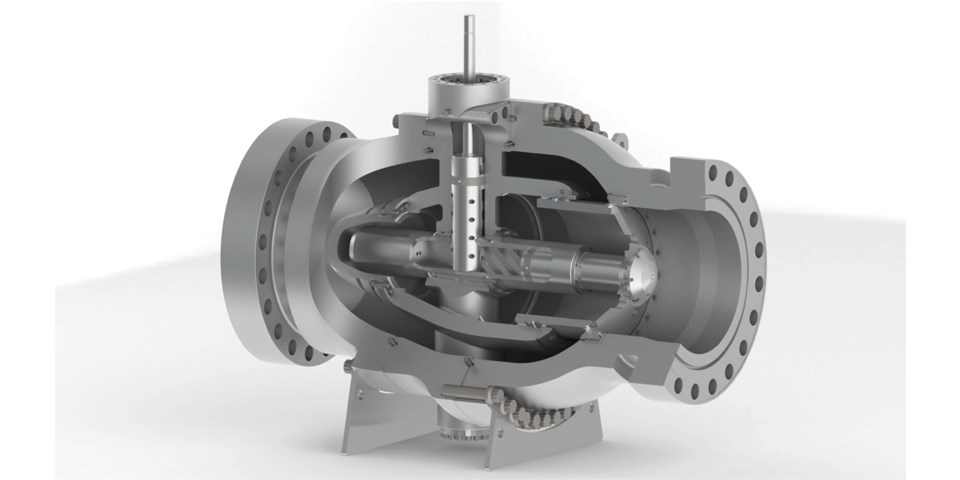Article by Luca Puglia
___
Three-piece body design
The valve body configuration selected for these valves is the three-piece body type. This particular body configuration allows for the valve body and lateral flanges to be manufactured in carbon steel material with all internal wetted surfaces protected with Inconel 625 welding overlay. This solution provides a corrosion resistance equivalent to solid corrosion resistant alloys, no manufacturing problems with high wall thicknesses components in carbon or low alloy steel material and significant cost savings compared to large size/high pressure valves bodies manufactured in solid corrosion resistant alloys, allowing high flexibility in material selection for a wide range of sizes and pressure classes.
The valve disc slides to the open or closed position by means of 90° rack transmission between the stem and the piston rod. Tight tolerances of sliding tooth racks allow very precise positioning of the disc.
The rod housing, which accommodates the rack, is at atmospheric pressure; in fact the rod housing is isolated from the line pressure by mean of redundant seals.
Design is reverse acting with intrinsic fail close action, therefore in case of failure of the above redundant seals, a piston effect on the valve stem will assist the closing action of the valve. Self-lubricating bearings provide low-friction and smooth sliding of the disc; they also provide support of parts in motion preventing any galling and wearing.
Low pressure drop
Thanks to the particular shape of the body, the valve provides a very good pressure recovery and thus both high Cv figures and low pressure drop are achieved across the valve conduit.
The body shape has been optimized through the CFD software Ansys CFX. CFD analysis has facilitated the understanding of the physical dynamics inside the valve design, optimising the quality of the inprogress design itself.
The dynamic forces due to disc movement have been minimized with fluo-dynamic computer simulations.
The annular section around the disc requires a smaller stroke than other valve types to generate a specific flow rate.
The disc is pressure balance;, in fact the line pressure acts on both sides of disc when the valve is in the open position. This, in addition to the low mass of internals, permits easy operation, fast stroking speeds and low operating forces.
With the valve in the closed position the valve will continue to function correctly even if there is a high pressure build-up on either the upstream or the downstream side of the valve.
Seat sealing is designed to provide long life tight shut-off performance under the most severe operating conditions. Seals are not exposed to flow stream when valve is in open position, during the throttling phase the flow is choked by metal parts preventing exposure of the seal to the high velocity flow. Only in the last millimeters of the valve stroke will the seal be introduced into its seating and energized.
The valves are supplied with primary metal, secondary soft sealing system that allows a fully bidirectional tight shut-off.
Proper design and manufacturing of the seat ring and the disc sealing surface guarantee that valves provide tight shut-off performances combined with long operational life.
Under normal operating conditions the valves do not require any special maintenance and the over-sizing of critical components and gasket redundancies increase the reliability of the valve.
FMECA study has been used to verify that the valve design was within the customer design parameters.
The axial flow valve design is the preferred option in Onshore/Offshore HIPPS applications when extremely quick closing is required. In fact, both the short stroke and the absence of friction between seat and disc contribute to the achievement of an extremely quick closing time.
Actuators for HIPPS application are designed for fast, reliable stroking during the entire service life. These actuators will close the valve by means of the mechanical energy of the spring.
Valves for HIPPS will remain in the open position for long periods of time that shall not influence the closing time; the axial flow design reduces the variations of required closing force. The pressure balanced disc minimizes the break to close thrust while the force of the compressed spring is at its maximum.


